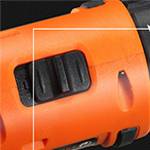homemade quail plucker
Aug . 28, 2024 23:54 Back to list
homemade quail plucker
Homemade Quail Plucker A Handy Guide for Enthusiasts
Quail hunting is an exciting and rewarding activity, but the process of plucking the feathers can often be tedious and time-consuming. A homemade quail plucker can change that. With a bit of creativity and some basic materials, you can build a functional device that makes the plucking process quick and efficient.
Understanding the Basics
A quail plucker operates on a simple principle it uses rubber fingers or similar materials to grasp and pull out feathers as the bird rotates. The components you’ll need include a sturdy frame, a motor (for rotation), rubber or soft plastic fingers, and a means of holding the quail securely. Many DIY enthusiasts use an old washing machine motor, which provides the necessary power for the task.
Materials Needed
- Frame Wooden boards or metal tubing can form the base of your plucker. - Motor Repurpose an old appliance motor or purchase a small one from a hardware store. - Rubber Fingers You can find these online or at a local farm supply store. Make sure they’re not too stiff; otherwise, they might damage the quail. - Drum A steel or plastic drum can serve as a rotating platform for the birds. - Switch A simple on/off switch will help you control the motor.
Building Your Plucker
1. Construct the Frame Start by assembling your frame. Aim for a height and width that allows you easy access to the quail. 2. Attach the Motor Secure the motor to the frame, ensuring that it’s properly mounted and won’t move during operation.
homemade quail plucker

3. Create the Drum Attach your drum to the motor. This drum should be slightly larger than the quail to allow for adequate movement as it spins.
4. Install the Rubber Fingers Attach the rubber fingers to the drum, ensuring they are evenly spaced. This will provide maximum coverage during the plucking process.
5. Wiring Connect the motor to the switch. Make sure all electrical components are safe and avoid any potential hazards.
Testing Your Plucker
Once you’ve assembled your quail plucker, it’s time to test it. Start with a single quail to ensure that the rubber fingers are effective and that no feathers are left behind. Adjust the speed of rotation if necessary, as different speeds will work better for various feather types.
Conclusion
A homemade quail plucker can save you time and effort, allowing you to enjoy the fruits of your hunting labor without the hassle of tedious plucking. With a little ingenuity and the right materials, you can create a useful tool that enhances your quail processing experience. Happy hunting and happy plucking!
-
Hot Sale 24 & 18 Door Rabbit Cages - Premium Breeding Solutions
NewsJul.25,2025
-
Automatic Feeding Line System Pan Feeder Nipple Drinker - Anping County Yize Metal Products Co., Ltd.
NewsJul.21,2025
-
Automatic Feeding Line System Pan Feeder Nipple Drinker - Anping County Yize Metal Products Co., Ltd.
NewsJul.21,2025
-
Automatic Feeding Line System - Anping Yize | Precision & Nipple
NewsJul.21,2025
-
Automatic Feeding Line System - Anping Yize | Precision & Nipple
NewsJul.21,2025
-
Automatic Feeding Line System-Anping County Yize Metal Products Co., Ltd.|Efficient Feed Distribution&Customized Animal Farming Solutions
NewsJul.21,2025






